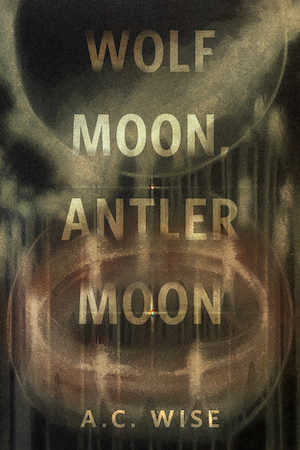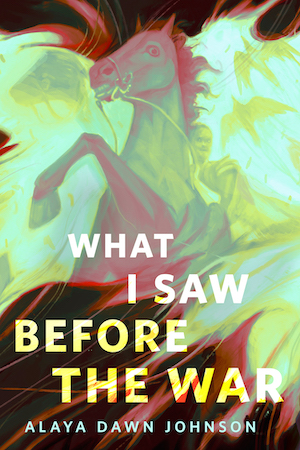When I think of aliens, I think of a man named Siggi. A wiry fellow with the weathered face of an outdoor laborer and nicotine-stained fingers, he was a fixture in the Studentenstadt student housing complex in the north of Munich, a place where I lived during my early twenties. There was a small pub on the 20th floor, and while we students sat at the cheap tables cluttered with glasses of Augustiner, Siggi would lurk quietly at the bar, chain-smoking Gauloises and contributing the occasional wry comment in a raspy voice. He wasn’t German, but I’m not sure where he was from; English was his preferred language and he spoke it well, with an accent.
The assumption was that he was subletting from one of the students, but nobody ever saw where he lived. To someone with an overactive imagination, Siggi was good daydream fodder: immigrant drifter, or alien quietly biding his time here among us Earthlings?
The alien living among us is a well-known sci-fi trope, encompassing characters from the parasitic pod people to our beloved Superman. But the thought there might be civilizations out there beside our own dates back a lot farther than the Man of Steel. Back in antiquity, it was common for mythological belief systems to include a cosmos that contained other worlds: Old Norse mythology imagined nine worlds all connected by a cosmic ash tree, and Hindu cosmology included a whopping fourteen worlds, called “loka.”
But it wasn’t until Copernicus and his heliocentric theories in the sixteenth century that we slowly began to understand our place in the universe as one of countless planets. In 1584, philosopher Giordano Bruno claimed that the universe was made up of an infinite number of solar systems, each with their own people and animals, and got himself burned at the stake for his thoughts. The idea stuck, though, and in 1608 Johannes Kepler wrote Somnium, arguably the first work of science fiction. In time the genre slowly grew, and over three hundred years later, Orson Welles sent people into a panic with his well-known radio broadcast of a Martian invasion in H. G. Wells’s The War of the Worlds.
When we fantasize about aliens, quite often it is with fear: they will come for our water, our land, our fleshy delicious selves. Invasion is what we half expect, because it’s what humanity has historically done with weaker cultures, and because it’s nearly impossible to imagine an alien culture without anthropomorphizing to some degree. We ask ourselves “What will they want to take from us?” just as much as we wonder if they will have hands and feet, eyes and ears.
As far as appearances go, there are more concepts of what aliens might look like than I can list: green bobble-headed Martians, vicious anthropoids, sly skin-wearing mimics, loveable furry creatures whose chief passion is eating cats. In truth, if we’re going to discover an alien life form, right now our best bet seems to be the less-than-dashing microbe. For a fiction writer, while an alien microbe could probably provide a good basis for a sci-fi thriller, the interactions between protagonist and alien might leave something to be desired.
What makes a good fictional alien, then? To me, it’s entertaining to imagine worlds that start with the same basic carbon-based building blocks as our own, where deviations stem from a slightly different environment—a rocky world might result in the dominant species requiring wings or long spidery legs, whereas a miserably hot climate could mean all inhabitants only survive thanks to thick exoskeletons. Other species might reflect their personalities—hard, shark-like faces on a predatory species, or flashing silver eyes on a species where honesty is not considered a virtue.
More interesting to me than appearances, though, is imagining how alien cultures would interact with us and with each other. Assuming there would even be a common means of communications, would we share a similar value system and reasoning, or would we each find the other utterly incomprehensible? Our current understanding of culture clash is limited by what we know, but with a population as diverse as our own, it is at least something most people have experienced, be it between different strata of the same society, or two completely different cultures on opposite sides of the planet.
Having lived comfortably in Europe, I considered myself immune to culture shock until I was sent to India on a work trip. My colleagues were pleasant and the city itself fascinating, but the small, superficial differences crawled under my skin like nothing I’d ever experienced. What’s with all the honking? Why are there no crosswalks, or even sidewalks? Why can’t I walk outside without everyone on the street staring at me? Why must everything taste like curry and fiery torture? But the real shock to my system came three weeks later, when I flew to ultramodern Tokyo. There at least the city infrastructure was more familiar to me—crosswalks and all—but in the Japanese culture I felt like no less of an outsider. I’d gone from Mars to Saturn. And as out of place as I felt, I watched my Indian colleague struggle with an even more difficult transition. She hated the food, and almost got creamed when she stepped into an intersection, unaware of the crosswalk lights.
That feeling of being outside, alone, mystified and frustrated by the seemingly incomprehensible traditions of another culture, can easily twist into scorn, distrust, even hatred. While the culture shock of interacting with an alien civilization would be severe—even if they had hands and feet and grandmas and team sports—I like to imagine that we Earthlings could adapt. It’s one of the things we do best. And if there are any aliens hidden away on our planet, I hope they see that once we get past caution and fear, we can also be friendly, inquisitive, helpful, and kind.
Two years ago, I went back to Munich and revisited the old Studentenstadt, and guess who I found sitting on an outdoor patio, enjoying a beer and a bit of sunshine? Siggi hadn’t changed a whit, and he still remembered me, too. If he’s still hoping for an interstellar pickup, I hope he doesn’t have to wait too much longer.
This article was originally published in January 2014.
Rachel Searles’s The Lost Planet is now out from Feiwel & Friends. Rachel grew up in Michigan’s Upper Peninsula, where she spent her childhood reading everything available, studying languages, and dreaming of seeing the world. She lives with her husband in Los Angeles where she is hard at work on the next book in the Lost Planet series. You can visit her at rachelsearles.com.









